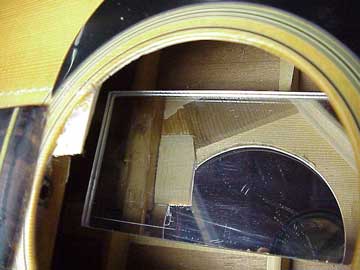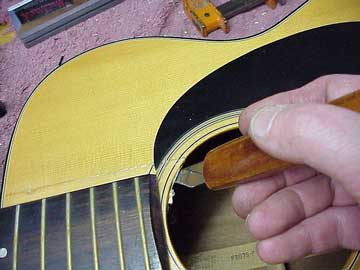Fingerboard Top Crack, Part Two
© Frank Ford, 6/5/99; Photos by FF, 6/5/99
Look closely at this one:
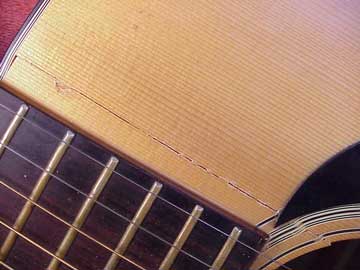
This guitar was undoubtedly left in a hot environment (a parked car, maybe) and the fingerboard section of the cracked top actually slid forward. The string tension brought the neck forward, and the action became higher as a result. Notice the deformation in the soundhole rings, and the gap at the edge binding by the 14th fret.
In the heat, the glue under the top brace became weakened and allowed the top to slide over the brace. Later, the glue joint's strength was restored as the instrument cooled.
Here the job is clearly more complicated than the previous one.
First, I needed to loosen the brace again, by prying it from the top using my thin palette knife:
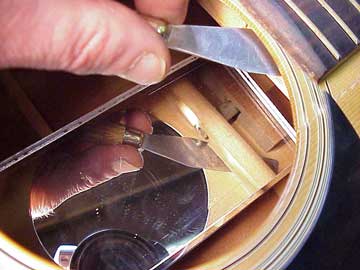
With the top brace loose, I was able to clamp the neck backward to realign the broken top:
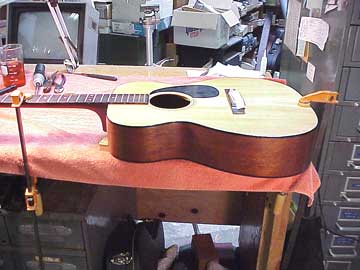
You can just see a 3/4" plywood block sticking out under the heel. I'm using that as the fulcrum as I strain the neck backward, clamping it to the bench.
See? Now things line up again:
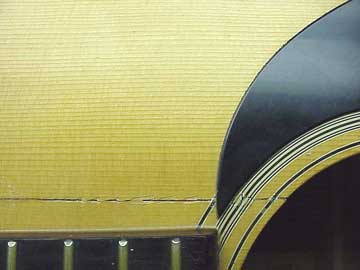
Once the top brace is loose, it doesn't take much pressure to slide the top back where it belongs. The trick is to keep it there!
Some new glue and clamping for that loose brace:
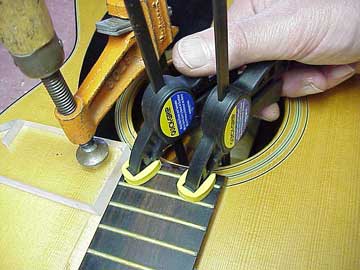
I certainly couldn't count on that one little brace to keep the top aligned under the relentless pull of six steel strings, so I made a little angle block to secure the top to the neck block and the mahogany truss rod block under the fingerboard:
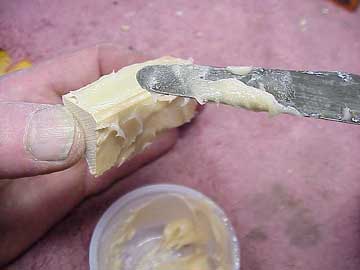
I mixed up some epoxy, thickened to peanut butter consistency, and simply placed it alongside the mahogany neck and truss rod blocks. (You can just see that truss rod block in the photo above, where I'm prying the brace loose. A corner of the brace is visible just above the end of my palette knife.) The epoxy patch holds itself in place nicely and doesn't require any clamping, because the glue has terrific cohesive strength.
Here's the patch in place:

